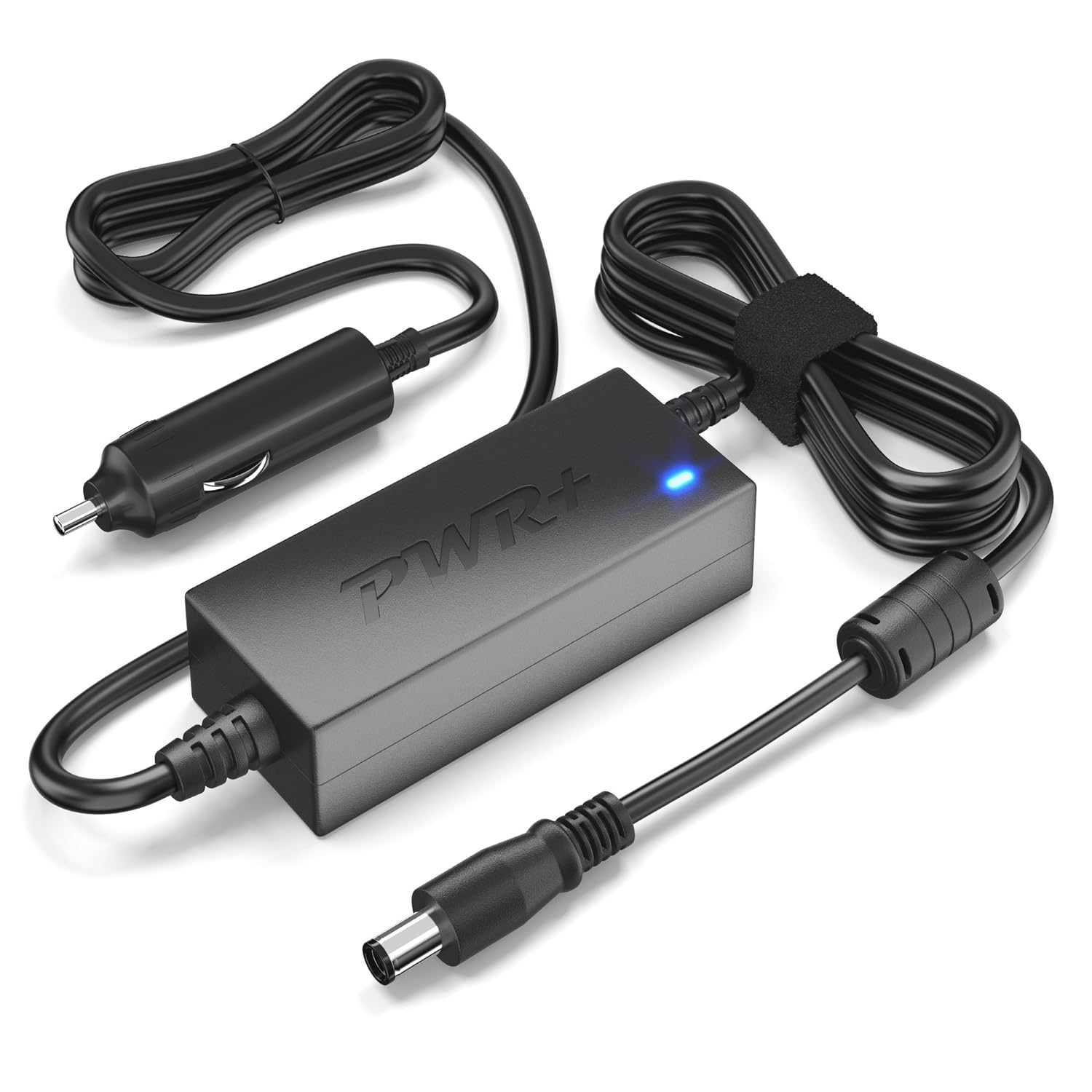If your laptop draws more than 60 watts, I'd recommend not geting a 'universal' car laptop converter, as only few are rated to supply more than this, though I see more on the market than a few years ago These universal ones are basically for recharging the laptop while it is off/ hibernate standby. They are not really designed to both power the laptop and charge its battery. I watched one rated for 80 watts melt and start smoking before my eyes when I first decided to bypass the inverter some 12 years ago. it was fine until I spun up the DVD player when the battery was low, but if I was not there to smell and see the smoke, well melted plastic stink might have been preferable than what could have happened..
Hopefully they are made better today, but I advise using caution when using 'Universal' laptop car adapters, and on some like DELL or HP, they will not charge the battery, only power the laptop as they require a third wire/ contact.
In addition to this is the Universal adapters seem to have even worse Ciggy plugs than other devices, and these all become compromised with use and more so and faster when asked to provide above 60 watts.
. These can also have issues with polarity or the exact plug part pulling out of the universal portion and possibly shorting out while doing so, perhaps damaging laptop.
To determine if it draws more than 60 watts multiply DC output amperage x output voltage. This will be listed on the original AC/DC power brick which came with your laptop.
One thing to keep in mind is it is more efficient to keep the laptop battery fully charged, than it is to unplug, use the laptop battery until its battery warning light comes on, then recharging it.
NOw if one is going to drive in 2 hours, then one can use the laptop battery. Or one can use the laptop battery
mid morning, as once the solar gets the battery to near absorption voltage , there wll soon be excess solar wattage available, and getting to absorption voltage earlier in the day via solar is always better for the battery.
An inverter powering the original AC/DC power brick will use significantly more battery power than will a 12v to ~19.5v DC to DC car adapter. Mine is basically 12 to 20% less juice, but it depends on the task the computer is performing and will depend on the efficiency of the inverter used at that specific wattage output.
As my laptop is basically my biggest electrical consumer, saving 12 to 20% is a considerable amount.
The issue with all car adapters is the ciggy plug. At some point it WILL fail.
https://www.bluesea.com/products/1015/12_Volt_Plug_with_Dash_Socket
The above link is much better, and is pretty easy to install the new plug, replacing the plug the car adapter came with. The spring loaded nipple tip is the (+). Its wire is usually red, but sometimes white, but double checking with a digital multimeter should be considered paramount when replacing.
got amazon electronics type in you laptop make and model and add 'car adapter'. Look for ones that look like this:
Some of the hits might just be a small inverter designed to plug your current power brick into. Avoid these.





